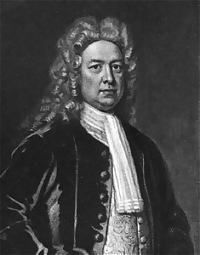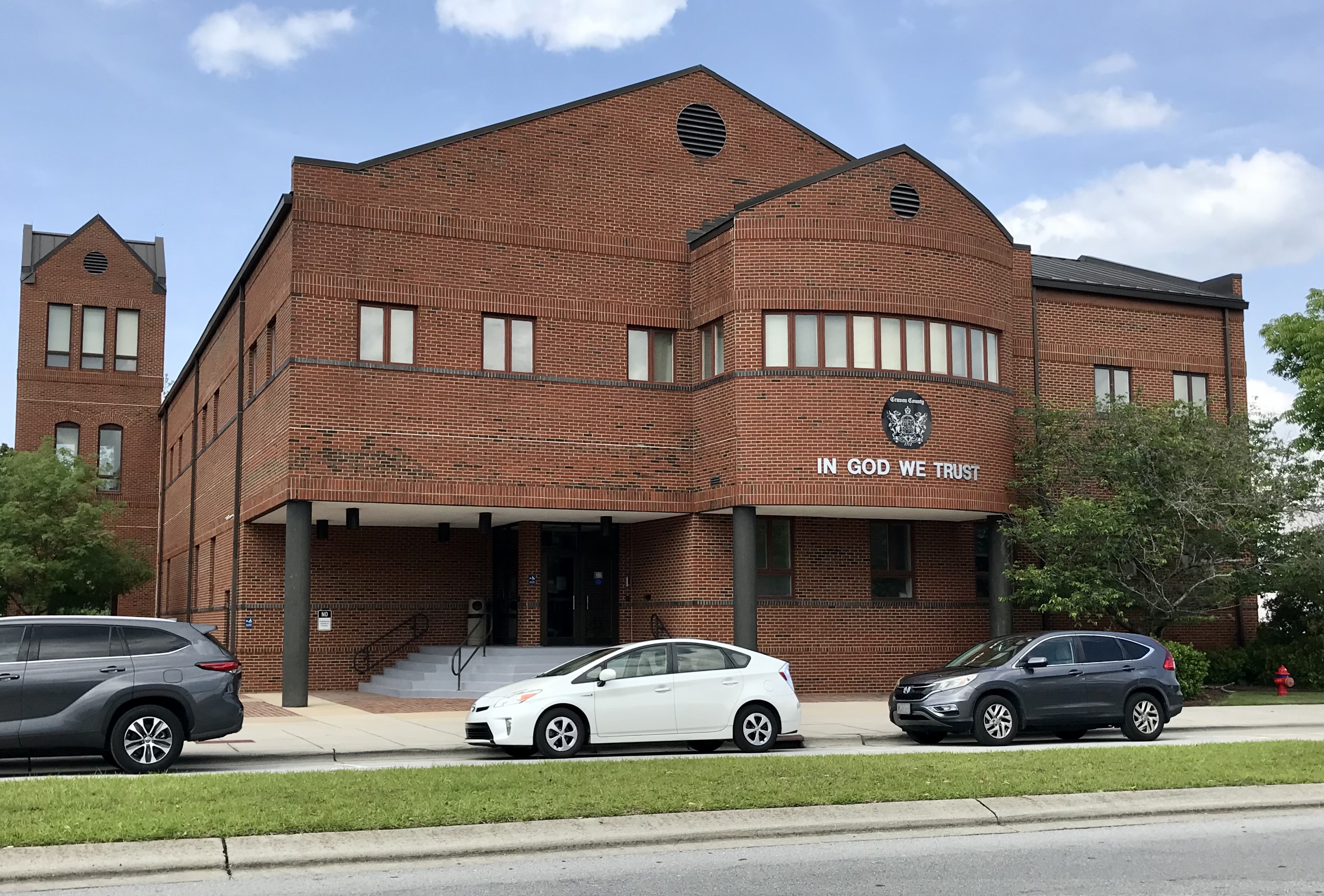|
Pitt County, North Carolina
Pitt County is a county located in the Inner Banks region of the U.S. state of North Carolina. As of the 2020 census, the population was 170,243, making it the 14th-most populous county in North Carolina. Its county seat is Greenville. Pitt County comprises the Greenville, NC Metropolitan Statistical Area. It is a component of the wider Greenville–Washington, NC CSA. History The county was formed in 1760 from Beaufort County, though the legislative act that created it did not become effective until January 1, 1761. It was named for William Pitt the Elder, who was then Secretary of State for the Southern Department and Leader of the House of Commons. William Pitt was an English statesman and orator, born in London, England. He studied at Oxford University and in 1731 joined the army. Pitt led the young "Patriot" Whigs and in 1756 became secretary of state, where he was a pro-freedom speaker in British Colonial government. He served as Prime Minister of Great Britain in ... [...More Info...] [...Related Items...] OR: [Wikipedia] [Google] [Baidu] |
William Pitt The Elder
William Pitt, 1st Earl of Chatham (15 November 170811 May 1778) was a British Whig statesman who served as Prime Minister of Great Britain from 1766 to 1768. Historians call him "Chatham" or "Pitt the Elder" to distinguish him from his son William Pitt the Younger, who also served as prime minister. Pitt was also known as "the Great Commoner" because of his long-standing refusal to accept a title until 1766. Pitt was a member of the British cabinet and with a brief interlude in 1757, its informal leader from 1756 to 1761, during the Seven Years' War (including the French and Indian War in the American colonies). He again led the ministry, holding the official title of Lord Privy Seal, between 1766 and 1768. Much of his power came from his brilliant oratory. He was out of power for most of his career and became well known for his attacks on the government, such as those on Walpole's corruption in the 1730s, Hanoverian subsidies in the 1740s, peace with France in the 1760s ... [...More Info...] [...Related Items...] OR: [Wikipedia] [Google] [Baidu] |
North Carolina Museum Of Natural Sciences
The North Carolina Museum of Natural Sciences (NCMNS) is a natural history museum in Raleigh, North Carolina. The museum is the oldest in the state, and the largest natural history museum in the Southeastern United States. The museum is made up of six facilities, divided between five campuses. The newest facility, the North Carolina Museum of Natural Sciences at Greenville, was announced in 2020 and opened to the public on September 18, 2021. NCMNS is a division of the state Department of Natural and Cultural Resources. History The North Carolina State Museum was created in 1879 by combining two existing state-owned collections of geologic and agricultural specimens. The museum was originally housed in the Briggs Building on Fayetteville Street. The museum's collections, outreach and education programs, and status grew over the next 60 years under the stewardship of Herbert Brimley. In 1887 the museum was placed under the management of the Department of Agriculture, and was m ... [...More Info...] [...Related Items...] OR: [Wikipedia] [Google] [Baidu] |
African American (U
African Americans, also known as Black Americans and formerly also called Afro-Americans, are an Race and ethnicity in the United States, American racial and ethnic group that consists of Americans who have total or partial ancestry from any of the Black people, Black racial groups of Africa. African Americans constitute the second largest ethno-racial group in the U.S. after White Americans. The term "African American" generally denotes descendants of Slavery in the United States, Africans enslaved in the United States. In 2023, an estimated 48.3 million people self-identified as Black, making up 14.4% of the country’s population. This marks a 33% increase since 2000, when there were 36.2 million Black people living in the U.S. African-American history began in the 16th century, with Africans being sold to Atlantic slave trade, European slave traders and Middle Passage, transported across the Atlantic to Slavery in the colonial history of the United States, the Western He ... [...More Info...] [...Related Items...] OR: [Wikipedia] [Google] [Baidu] |
White (U
White is the lightest color and is achromatic (having no chroma). It is the color of objects such as snow, chalk, and milk, and is the opposite of black. White objects fully (or almost fully) reflect and scatter all the visible wavelengths of light. White on television and computer screens is created by a mixture of red, blue, and green light. The color white can be given with white pigments, especially titanium dioxide. In ancient Egypt and ancient Rome, priestesses wore white as a symbol of purity, and Romans wore white togas as symbols of citizenship. In the Middle Ages and Renaissance a white unicorn symbolized chastity, and a white lamb sacrifice and purity. It was the royal color of the kings of France as well as the flag of monarchist France from 1815 to 1830, and of the monarchist movement that opposed the Bolsheviks during the Russian Civil War (1917–1922). Greek temples and Roman temples were faced with white marble, and beginning in the 18th c ... [...More Info...] [...Related Items...] OR: [Wikipedia] [Google] [Baidu] |
Edgecombe County, North Carolina
Edgecombe County ( or )Talk Like a Tarheel , from the North Carolina Collection website at the University of North Carolina at Chapel Hill. Retrieved August 16, 2023. is a County (United States), county located in the U.S. state of North Carolina. As of the 2020 United States census, 2020 census, the population was 48,900. Its county seat is Tarboro, North Carolina, Tarboro. Edgecombe County is part of the Rocky Mount metropolitan area, Rocky Mount, NC Metropolitan Statistical Area. History This area eventually comprising Edgecombe County was historically home to the Tuscarora people, Tuscarora, a Native Americans in the United States, Native American people. The first European settlers arrived in the Tar River region in ...[...More Info...] [...Related Items...] OR: [Wikipedia] [Google] [Baidu] |
Wilson County, North Carolina
Wilson County, officially the County of Wilson, is a county located in the U.S. state of North Carolina. As of the 2020 census, the population was 78,784. The county seat is Wilson. The county comprises the Wilson, NC Micropolitan Statistical Area, which is also included within the Rocky Mount-Wilson- Roanoke Rapids, NC Combined Statistical Area. History On February 13, 1855, the North Carolina General Assembly established Wilson County from parts of Edgecombe, Johnston, Nash, and Wayne counties. The county was named for Colonel Louis D. Wilson, a U.S. Volunteers soldier, who died of yellow fever while on leave from the state senate during the Mexican–American War. Wilson Speedway held 12 NASCAR Cup Series races at the county fairgrounds in Wilson between 1951 and 1960. The half mile dirt track operated between 1934 and 1989. Geography According to the U.S. Census Bureau, the county has a total area of , of which is land and (1.48%) is water. State and loca ... [...More Info...] [...Related Items...] OR: [Wikipedia] [Google] [Baidu] |
Greene County, North Carolina
Greene County is a county located in the U.S. state of North Carolina. As of the 2020 census, the population was 20,451. Its county seat is Snow Hill. History Greene County, being a part of land grant by King Charles II of England in 1663, was first settled around 1710 by immigrants from Maryland, Virginia, and parts of North Carolina. The original inhabitants of the area, the Tuscarora Indians, fought with these immigrants and on March 20–23, 1713, a fighting force of South Carolinians and Yamasee Indians, under Colonel Murice Moore, defeated the Tuscarora, under the leadership of Chief Hancock. This was the final major battle of the Tuscarora War at Fort Neoheroka near current day Snow Hill. In 1758, the area now recognized as Greene and Lenoir Counties was separated from Johnston and named Dobbs for the Royal Governor. The county was formed in 1791 from the northern part of Dobbs County. It was originally named Glasgow County, for James Glasgow, North Carolina Secr ... [...More Info...] [...Related Items...] OR: [Wikipedia] [Google] [Baidu] |
Lenoir County, North Carolina
Lenoir County ( )Talk Like a Tarheel , from the North Carolina Collection website at the . Retrieved August 16, 2023. is a in the of . As of the [...More Info...] [...Related Items...] OR: [Wikipedia] [Google] [Baidu] |
Craven County, North Carolina
Craven County is a county located in the U.S. state of North Carolina. As of the 2020 census, the population was 100,720. Its county seat is New Bern. The county was created in 1705 as Archdale Precinct from the now-extinct Bath County. It was renamed Craven Precinct in 1712 and gained county status in 1739. It is named for William, Earl of Craven, who lived from 1606 to 1697. Craven County is part of the New Bern, NC Micropolitan Statistical Area. History Early history On August 4, 1661, George Durant purchased land from Cisketando, king of the Yeopim Indian tribe. On March 13, 1662, a second purchase was made from Kilcocanen, another Yeopim. By 1662 Durant was living in Virginia on a tract of land along the Perquimans River which flows into Albemarle Sound, which became part of the Carolina colony in 1665. Creation The land eventually constituting Craven was first organized as a portion of Bath County. On December 3, 1705, a portion of Bath was split off to form the n ... [...More Info...] [...Related Items...] OR: [Wikipedia] [Google] [Baidu] |
Martin County, North Carolina
Martin County is a County (United States), county located in the U.S. state of North Carolina. As of the 2020 United States census, 2020 census, the population was 22,031. Its county seat is Williamston, North Carolina, Williamston. History Martin County was formed in 1774 from the southeastern part of Halifax County, North Carolina, Halifax County and the western part of Tyrrell County, North Carolina, Tyrrell County. It was named for Josiah Martin, the List of governors of North Carolina (1712–1776), governor of North Carolina from 1771 to 1776. Whereas Dobbs County, North Carolina, Dobbs County and Tryon County, North Carolina, Tryon County, North Carolina, named for his predecessors, were abolished after American Revolution, American independence, Martin County was neither abolished nor renamed. The Martin County Courthouse (North Carolina), Martin County Courthouse was listed on the National Register of Historic Places in 1979. Geography According to the U.S. Census Bu ... [...More Info...] [...Related Items...] OR: [Wikipedia] [Google] [Baidu] |
Tar River
The Tar River is a river that is approximately long, in northeast North Carolina flowing generally southeast to an estuary of Pamlico Sound. The Tar River becomes the tidal Pamlico River once it passes under the U.S. Highway 17 Bridge in Washington, North Carolina. North Carolina was originally a naval stores colony—that is, the blanket of longleaf pines that covered the coastal plain was used by the British Navy for ships' masts and the pine pitch was used to manufacture tar caulking for vessels. The river derives its name from its historic use as a major route for tar-laden barges as they headed to the sea. The city of Tarboro is on the banks of the river. Recent research conducted by East Carolina University, Greenville and Pitt County historians has uncovered documentation noting that before the Civil War, the North Carolina Legislature had appropriated funds to construct dams and locks on the Tar River in an attempt to facilitate almost year-round navigation for th ... [...More Info...] [...Related Items...] OR: [Wikipedia] [Google] [Baidu] |



